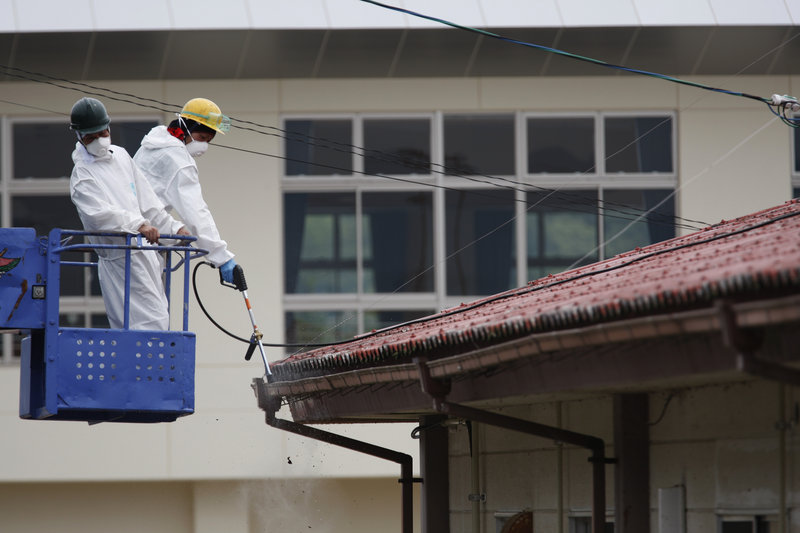TOKYO — Some residents evacuated from around Japan’s stricken nuclear power plant may not be able to return to their homes for “a long time” due to projections that high radiation levels will linger, a top government official said Monday.
The government is considering providing additional support for the evacuees, including long-term housing rather than prefabricated temporary homes that the government currently is building, Cabinet members said over the weekend.
The comments come after a report from the education and science ministry projected that radiation accumulated over one year at 22 monitoring sites within roughly 12 miles of the Fukushima Dai-ichi plant would climb above 100 millisieverts, five times higher than the international safety standard of 20 millisieverts per year.
The plant was damaged by a March 11 earthquake and tsunami that knocked out its vital cooling systems, causing meltdowns in three reactor cores that spewed radiation into the air. Some 80,000 people within a 12-mile radius of the plant have been evacuated.
“We cannot deny a possibility that some of the residents may not be able to return to their homes for a long time in some areas despite our decontamination efforts,” Chief Cabinet Secretary Yukio Edano said at a regular news conference. “We are very sorry.”
Prime Minister Naoto Kan said he may travel north to the affected area this weekend to meet with local officials and residents to discuss further steps the government may take.
The government’s plan to bring the troubled plant to a cold, stable shutdown by January had boosted hopes among evacuees that they might be able to return to their homes soon after that. The latest projections seem to indicate that won’t be possible for some.
A site in the town of Okuma, less than 2 miles southwest of the nuclear complex, was expected to accumulate 508 millisieverts over a year, the highest amount the report showed.
Radiation specialists say doses of that size raise cancer risks. Evidence is less clear on smaller amounts, but in theory, any increased radiation exposure raises the risk of cancer.
While the amount of radiation leaking from the plant has dropped sharply since early in the crisis, radioactive particles that have accumulated on buildings, trees and in the soil since the accident pose health risks.
Edano said the government has not decided which areas would be off-limits for the long term. Officials planned to make a decision based on monitoring results and the progress of ongoing decontamination efforts.
Copy the Story Link
Send questions/comments to the editors.



Success. Please wait for the page to reload. If the page does not reload within 5 seconds, please refresh the page.
Enter your email and password to access comments.
Hi, to comment on stories you must . This profile is in addition to your subscription and website login.
Already have a commenting profile? .
Invalid username/password.
Please check your email to confirm and complete your registration.
Only subscribers are eligible to post comments. Please subscribe or login first for digital access. Here’s why.
Use the form below to reset your password. When you've submitted your account email, we will send an email with a reset code.